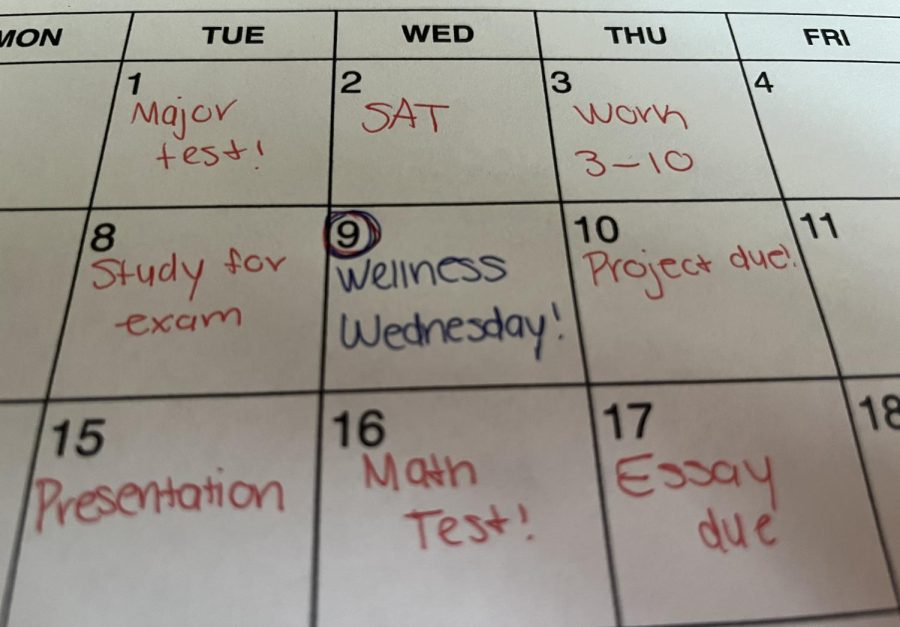Opinion: Wellness Wednesdays Revisted
One day of remote learning per week — or even per month — would afford high school students much-needed relief.
During the 2020-21 school year, students had a nice break in the middle of the week.
November 3, 2022
So, who remembers Wellness Wednesdays?
During the 2020-21 school year, North Allegheny introduced the policy that every Wednesday was a break from in-person learning. Some classes met online at the designated time via Google Meet. In other classes, students had asynchronous work to complete, and once they were done with their assignments, they were able to do whatever they wanted.
For all students, two hours at the end of the day were available to chat one on one with teachers, finish work, or even catch up on sleep. I’m hardly alone in stating that Wellness Wednesdays were a major stress reliever.
When the 2021-22 school year began and the pandemic was waning, NA made the decision to remove Wellness Wednesdays. This year, nearly all traditional high schools in the country are full-time in-person, which, of course, is the way school had been conducted before the onset of COVID-19.
But while a return to normalcy may seem to be best for students, it is worth asking what might be gained were NA to re-institute Wellness Wednesdays.
Consider the emotional benefits. Let’s be honest, school is stressful, especially for juniors and seniors. Worrying about applying to colleges, taking the SAT or ACT, and keeping up with challenging classes can feel overwhelming at times. When stress becomes too much for teens, it can lead to anxiety, withdrawal, aggression, physical illness, and drug or alcohol use. Wellness Wednesdays can help to counteract these risks.
A day of remote learning can also help students catch up on sleep. Being able to sleep in was a huge bonus of Wellness Wednesday in 2020-21. It’s simple: high school students do not get nearly enough sleep, which, according to experts, is 8 to 10 hours a night. The CDC reports that less than 30 percent of teenagers get enough sleep on a school night.
One of the causes of teen sleep-deprivation is early high school start times. At North Allegheny, we start at 7:23, which means most students have to wake up before 6 am. Sleep-deprivation can lead to concentration difficulties, short attention span, memory impairment, poor decision making, and most importantly, reduced academic performance. One day per week that allows students to sleep for an extra hour would be a helpful antidote.
The most practical benefit of Wellness Wednesdays is that they are a great way to catch up on work, especially for students who previously missed a day — or several days — of school. One day per week, the pressure is less intense and the ability to get back on the right foot is easier.
Needless to say, however, remote learning is not without its setbacks. Numerous studies have concluded that most students learn best in an in-person environment. Additionally, Wellness Wednesdays may disrupt a teacher’s lesson plans or test dates. It’s also important to consider the challenges presented to working parents of younger children who may not be able to stay home with their children. But a return to the policy from 2020-21 need not include all students K-12, and Wellness Wednesday need not occur every week. Even a monthly day of remote learning would be a great relief to many teenage students.
If the benefits of Wellness Wednesdays far outweigh the costs, would it hurt so much to bring them back?
_______________________________________________________________________
Editors’ note: All opinions expressed on The Uproar are a reflection solely of the beliefs of the bylined author and not the journalism program at NASH. We continue to welcome school-appropriate comments and guest articles.












